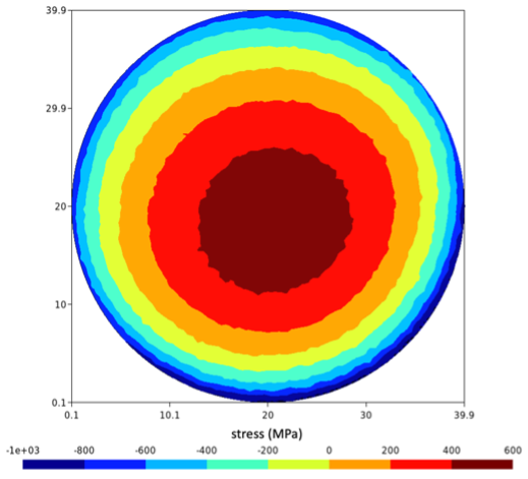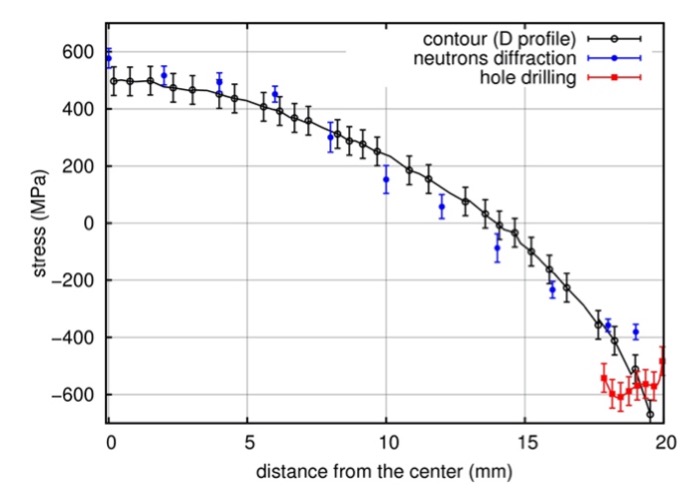[Publication] Solid state phase transformations and residual stress genesis in titanium alloys
Thermomechanical treatments of titanium alloys involve quenching operations that lead to the formation of residual stresses at different scales and to distortions, which must be controlled. Despite an abundant literature, the influence of phase transformations on the generation of macroscopic residual stresses has been little studied for these treatments.
IJL researchers have combined experiments and simulations to understand the influence of phase transformations in the solid state on stress generation. Water quenching treatments preceded by solution heat treatment in the high temperature range were applied at the IJL to large-size laboratory samples of TA6V and Ti17 alloys. The residual stresses after quenching were determined by the contour method, a recently introduced method (coll. Mat-In-Méca), to obtain their distribution in the median plane. Neutron diffraction (coll. HZB, Berlin) was used to obtain a radial stress profile in excellent agreement with the contour method. Finally, the hole drilling method (coll. CETIM Senlis) is complementary because it allows more precise determinations near the surface.
It comes out the experiments and the simulation that the phase transformations do not have a significant direct impact on the generation of stresses, because of the small deformations induced (volume variation, transformation plasticity). But the simulation (multiphysics model predicting the coupling between thermal, mechanical and metallurgical evolutions) shows that the plastic deformations at the origin of the residual stresses are generated at high temperature, when the phase transformations are still in progress. It is then necessary to consider their impact on the thermomechanical behavior in order to be able to accurately predict the residual stresses.
This study was supported by the LabEx DAMAS in the framework of David Maréchal's post-doc.


References :
Title: Formation of residual stresses during quenching of Ti17 and Ti–6Al–4V alloys: influence of phase transformations
Authors: Julien Teixeira, David Maréchal, Robert C. Wimpory, Sabine Denis, Fabien Lefebvre, Renaud Frappier
Journal: Materials Science and Engineering A
Date of publication (online): December 2021
Link: https://doi.org/10.1016/j.msea.2021.142456
Figure caption: 2D map of the axial residual stress in the median plane of a Ti-6Al-4V cylinder (diameter 40 mm) after quenching obtained by the contour method. Radial profile of axial stress obtained by contour method, neutron diffraction and hole drilling method.

